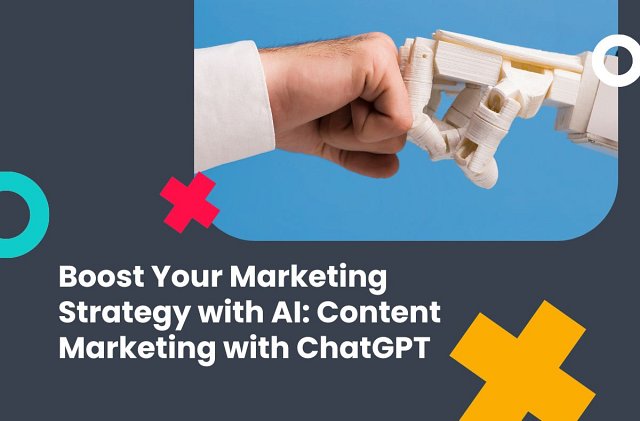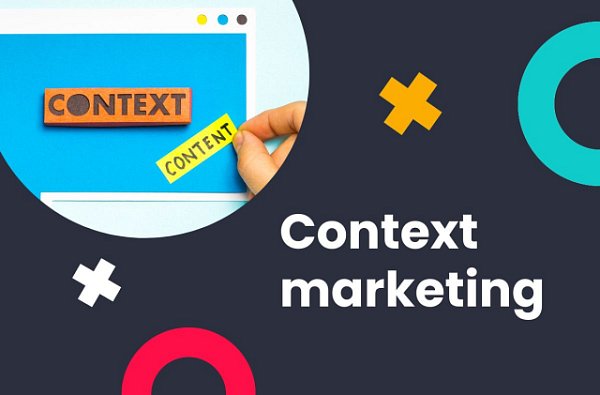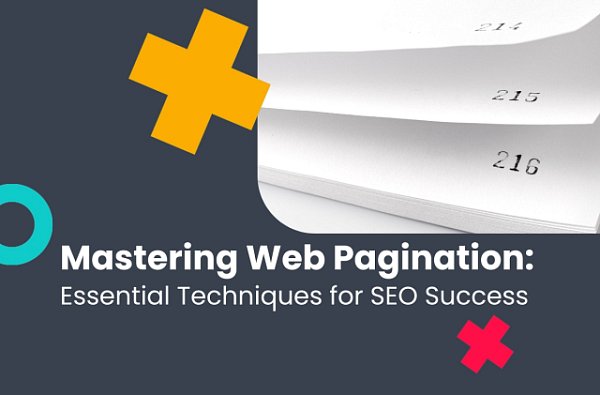Boost Your Marketing Strategy with AI: Content Marketing with ChatGPT
(15 min. read)

What is ChatGPT, and what is it used for?
Before we move on to the practical applications of this incredible tool, it’s important to understand what exactly ChatGPT is, and what it isn’t. Developed by OpenAI, ChatGPT is an innovative AI tool or an application that leverages underlying GPT language models, like gpt-3.5 or gpt-4, to produce human-like text output.
What sets ChatGPT apart from other AI models is its impressive ability to understand and maintain context in a conversation, offering responses that are coherent, relevant, and often indistinguishable from human-written text. This tool has an uncanny talent for creativity and can be used to write anything from poetry and stories to technical reports and marketing copy.
GPT-3.5 and GPT-4 are language models. They are vast neural networks trained on a diverse range of internet text. They generate text based on the patterns they learned during this training, and GPT-4 is currently the most advanced of these models in terms of the number of parameters and the scale of training data used.
ChatGPT is a tool that uses these language models to carry out conversations. It’s designed specifically for interactive and dynamic text generation, and can create various types of output. First and foremost, ChatGPT is used to generate creative content, but can also act as customer support or a personal assistant, it can be used as a study tool, it can translate text, and even help write code and spot bugs in already-written code.
How does ChatGPT work?
To fully appreciate the capabilities of ChatGPT in content marketing, it’s crucial to understand how it works. Under the hood of the intelligent language model is a complex network of algorithms, based on a technology called “transformer architecture” – a model design that gives ChatGPT a self-attention mechanism. It is able to weigh the importance of different parts of the input data when making predictions, instead of processing data sequentially like older models, far exceeding older Natural Language Processing (NLP) models.
ChatGPT has been trained on a wide range of internet texts, but, unlike most AI models, it doesn’t just regurgitate the information it has learned. Instead, it uses this training to understand context, grammatical structures, idioms, and even cultural references.
Here’s where it gets truly impressive: ChatGPT generates responses to prompts by predicting what comes next in a sequence of words, much like humans predict the end of a sentence while listening or reading. It does this by weighing billions of possible word combinations, then selecting the most likely continuation, creating everything from a single sentence to entire books.
AI technology behind ChatGPT
At the heart of ChatGPT lies cutting-edge artificial intelligence technology using a specific type of deep learning. Deep learning is a subset of machine learning, where artificial neural networks – algorithms inspired by the structure of the human brain – learn from vast amounts of data. While a traditional neural network only contains two or three layers, a deep learning model has many. The “deep” in deep learning refers to this idea of successive layers of representation.
When using ChatGPT, the transformer-based model goes through a two-step process:
- pre-training
- fine-tuning
During the pre-training phase, the model is exposed to a broad range of internet text, learning everything from language structure and grammar to facts about the world. The second phase, fine-tuning, is where ChatGPT is further refined on a narrower dataset with human supervision. This enables the model to be more controlled and safe, capable of responding accurately to more specific prompts and avoiding generating inappropriate or biased content.
GPT-4, the most recent language model from OpenAI as of March 14, 2023, utilized a staggering count of over 170 trillion parameters to help determine its behavior and output. This is a significant leap from GPT-3, which employed a still impressive but comparatively smaller number of 175 billion parameters. In essence, these parameters are the learned aspects of the model that influence how it processes and generates text based on the input it receives. While significantly improving coherence and contextuality, it has also made GPT-4 require more computing power and resources.
How to use ChatGPT?
Now that we know how ChatGPT works, it’s time to talk about how you can actually use this innovative tool to improve your content marketing strategy. The versatility of ChatGPT makes it suitable for a wide range of content marketing tasks, from drafting engaging blog posts and writing product descriptions, to brainstorming creative campaign ideas and generating personalized email content.
First, make sure you have registered and are logged in. Go to chat.openai.com and create a new account, or log in if you’re already registered.
To start using ChatGPT, all you have to do is provide it with a text prompt, which could be anything from a single word to a more detailed instruction. Based on the input, the AI will generate a text response, continuing the narrative you’ve started or answering the question you’ve asked.
For example – if you’re writing a blog post on the latest digital marketing trends, you could prompt ChatGPT with the initial sentence or paragraph, and it will generate the rest of the text. Simply ask the AI for whatever it is you want and watch it generate in real time.
You can use ChatGPT to draft social media posts, generate innovative campaign ideas, and create highly-personalized content that resonates more effectively with your target audience. Keep in mind, however, that ChatGPT’s output isn’t always perfect. It may require editing or fine-tuning to ensure the generated content aligns perfectly with your brand – but it can still save tons of time.
With ChatGPT, you've got a tool that's as effective as the effort you put into it. It's a two-way street: the output you receive is largely determined by the quality of the input you provide. Therefore, to get the most valuable and accurate responses, it's important to offer clear and precise instructions. Think of it as a conversation – the more detailed and well-structured your prompts are, the better the ensuing dialogue will be. So, be clear, be specific, and remember: garbage in, garbage out!
How is AI and ChatGPT changing content creation?
By automating parts of the content creation process, tools like ChatGPT are helping marketers save time, reduce costs, and enhance the overall quality of their input.
The most noticeable impact, perhaps, is the increase in efficiency and productivity. The time required to generate ideas, create drafts, and finalize content has been drastically reduced with the help of AI. As a result, marketers can create more content in less time, which is especially beneficial for businesses that rely heavily on content marketing for their strategy.
The AI’s ability to generate unique, engaging, and high-quality content is changing how we approach creativity. Instead of starting from a blank slate, marketers can use AI to jumpstart their creative process, leading to more diverse content marketing, as the AI can explore a wide range of ideas and styles that humans might not think of.
The personalization capabilities of AI allow marketers to create highly targeted and relevant content. ChatGPT can tailor content based on previous interactions or baked on specific user data, resulting in more meaningful engagement with your target audience. This heightened personalization can lead to improved customer satisfaction and higher conversion rates.
However, while AI and ChatGPT offer a multitude of benefits, it's important to remember that they are tools to augment human creativity, not replace it. The role of a content marketer is still crucial in providing direction, ensuring brand consistency, and adding a human touch to the content.
Creating effective prompts for ChatGPT
Knowing how to create effective prompts is crucial to harness the full potential of ChatGPT. A well-structured prompt can guide the AI to produce the type of content you need, whether it’s a detailed blog post or a catchy social media caption. When creating prompts, focus on the following aspects:
- Clarity: Start by being clear and specific about what you want ChatGPT to generate. For example, if you need new ideas for a blog post, you could write “Generate five blog post titles about digital marketing trends in 2021.” This clearly indicates the type of content (blog post titles), the topic (digital marketing), and the timeline (2021).
- Context: Provide sufficient context to guide the AI’s response. For a blog post, you might give a brief overview of the topic or the tone you want to set. For instance, “write an informative and engaging introduction for a blog post about the benefits of adopting a plant-based diet” would be an effective use of context in a prompt.
- Guidelines: If you have any specific requests, include them in your prompt. If you require a product description that’s SEO-optimized, you might say “Write a 150-word SEO-optimized product description for men’s waterproof hiking boots”. Keep in mind that ChatGPT based on GPT-3.5 model is limited to knowledge before 2021, which means its choice of key phrases might be obsolete. However, an important update has been implemented for users of ChatGPT+. As of May, ChatGPT+ features a browsing tool built on the GPT-4 model, which allows it to provide current and accurate information.
- Experimentation: Don’t be afraid to experiment and try out different types of prompts. The AI’s flexibility allows for a variety of approaches, and you may find that certain types of prompts yield better results for specific tasks. Keep trying, and remember to write down any prompt that worked exceptionally well.
Keep in mind that it might take a few attempts to get the desired output – and even then, some human supervision and editing may be necessary to make sure the content meets your standards.
How to use ChatGPT to improve your SEO strategy
Search Engine Optimization (SEO) is a fundamental part of any successful content marketing strategy – and ChatGPT can play a significant part in enhancing your website’s SEO.
You can also ask ChatGPT to cluster keywords that are semantically relevant, generate related keywords and synonyms, create titles based on provided keywords, generate FAQs for your product, and even suggest new heading tags.
First of all, ChatGPT can be an invaluable tool for SEO Specialists looking to generate keyword ideas. By inputting a topic or a set of related words, ChatGPT can generate a wide range of associated terms and phrases that are relevant to your given context. This can help you uncover long-tail keywords or alternative search terms that you may not have initially considered.
You can also ask ChatGPT to cluster keywords that are semantically relevant, generate related keywords and synonyms, create titles based on provided keywords, generate FAQs for your product, and even suggest new heading tags.
Continuing on the benefits of ChatGPT for SEO, another prominent use-case is keyword-rich content generation. By providing a prompt that includes your target keywords, you can guide the AI to generate text that’s not only relevant and engaging, but also optimized for search engines. ChatGPT can also be utilized to create diverse content types for SEO, including meta descriptions, alt texts for images, and SEO-friendly headlines. These elements are crucial for improving your search engine visibility, and can be time-consuming to write manually for every page or post on your website.
Understanding the search intent of queries is critical for producing content that resonates with your target audience. By using ChatGPT, you can input a series of search queries and let the model generate potential interpretations of the user's intent behind those queries. This can provide insights into what your audience is truly interested in or what they are seeking, allowing you to tailor your content to more effectively meet their needs and expectations.
ChatGPT's integrations with other tools
As powerful as ChatGPT is on its own, its utility can be significantly improved when integrated with other marketing tools and platforms. These integrations can streamline your content creation process, enable more efficient content distribution, and more – let’s take a look at some examples:
- Content Management Systems (CMS): ChatGPT can be integrated with CMS platforms like WordPress or HubSpot, allowing you to generate and publish content directly on your website.
- Social Media Management Tools: ChatGPT’s capability to generate engaging social media content can be taken to the next level. Apps like Buffer or Hootsuite can be integrated with ChatGPT to generate, schedule, and publish AI-written posts right from the platform.
- Email Marketing: When integrated with email marketing platforms like Mailchimp, ChatGPT can generate personalized email content with catchy subject lines, engaging content, and compelling CTAs – all tailored to your audience’s preferences.
- SEO Tools: Platforms like SEMrush, Ahrefs, or Senuto can be integrated with ChatGPT to further enhance your SEO strategy. Senuto employs an AI-powered Content Writer that suggests keywords for your new content, while Notion.so has a built-in AI feature to use simple prompts to brainstorm new ideas and create better content.
- CRM Platforms: ChatGPT can also create statistics and analyze CRM data, providing actionable suggestions for enhanced marketing. It can also perform competitor analysis, create effective campaigns, and more.
Pros of using ChatGPT in content creation
ChatGPT can significantly speed up the content creation process by generating high-quality text in seconds. This saves you tons of time and resources, enabling you to focus on other important aspects of your marketing strategy. You can generate consistent content at scale, and whether you need multiple blog post ideas, social media captions, or product descriptions, ChatGPT can produce them efficiently and reliably.
As an AI tool, ChatGPT can potentially save you the costs associated with hiring additional writers or spending hours creating content yourself. The tool is available for free (with limitations), and long-term savings can be substantial. ChatGPT’s ability to tailor content based on provided inputs allows for a degree of personalization that can be hard to achieve manually.
ChatGPT is also available 24/
ChatGPT Limitations
While ChatGPT can be powerful, it’s also important to be aware of its limitations:
- Lack of contextual understanding: ChatGPT uses patterns in the data it was trained on, not genuine comprehension. As such, it may occasionally produce content that seems off-topic or is incorrect.
- Inconsistency in long texts: For longer pieces of content, ChatGPT might not maintain complete consistency, deviating from the main topic or repeating some points, which again necessitates human editing.
- Absence of emotion and empathy: As an AI, ChatGPT does not have any emotions. While it can mimic these characteristics based on training data, it will never capture the emotional nuances that a human writer could, especially in sensitive topics.
- Misinterpretation of prompts: ChatGPT may sometimes misinterpret prompts, especially if they are ambiguous or poorly defined, underlining the importance of clear and specific prompts.
Tip: For longer prompts, it's beneficial to follow up by asking ChatGPT to summarize what it understood from your instructions. This step allows you to ensure that the model has correctly grasped the essence of your request. If necessary, reiterate the key elements to reinforce your intent. It's much simpler to fine-tune the prompt at this stage, rather than revising the entire output afterwards.
- Missing brand voice: Maintaining a consistent brand voice across content can be challenging with ChatGPT.
The future of content creation using ChatGPT and AI
As we look ahead, it's clear that AI and tools like ChatGPT will continue to play a pivotal role in the evolution of content marketing. They offer the potential for increased efficiency, creativity, and personalization that was previously unattainable.
In terms of content creation, we can expect AI to become even more capable and versatile. Future versions of ChatGPT and similar models will likely have improved understanding of context and be able to maintain consistency in longer texts. They may also offer better control over tone and style, allowing for even more personalized content.
However, as AI becomes more integral to content marketing, the importance of ethical usage will be underscored. Organizations will need to ensure responsible use of AI, avoiding misuse and maintaining transparency with their target audience about the use of AI in their content creation process.
The future of content creation with ChatGPT and AI looks promising. By effectively leveraging these tools while keeping their limitations in mind, businesses can enhance their content marketing efforts, reach a wider audience, and ultimately drive more success in their marketing goals.
FAQ
What does GPT stand for?
GPT stands for “Generative Pretrained Transformer.” It's a type of artificial intelligence model used for natural language processing tasks, including understanding and generating human-like text based on provided prompts or context. The “generative” part refers to the model's ability to create new content, while “pretrained” means the model has been initially trained on a large amount of data before it's fine-tuned for specific tasks. “Transformer” refers to the architecture of the model, which utilizes a mechanism called “attention” to understand the context and dependencies between words in a text.
Is ChatGPT capable of creating SEO-friendly content?
Yes, ChatGPT is capable of creating SEO-friendly content, but it's important to note that the quality of the content will depend largely on the input or prompts that are given to it. For example, if you specify a target keyword or phrase in your prompt, ChatGPT can generate content that includes that keyword. Similarly, you can ask it to create meta descriptions, alt texts, or headlines that are optimized for SEO.
However, while ChatGPT can help create SEO-friendly content, it doesn't inherently understand SEO principles. It's not aware of the latest algorithm updates from search engines like Google, nor can it perform keyword research or strategic SEO planning. It's a tool for content creation, not a comprehensive SEO solution.
How much does GPT-4 cost?
GPT-4 can be bought using either ChatGPT API or ChatGPT Plus subscription. For API usage, GPT-4 is available in 8K and 32K context, priced respectively at $0.03 and $0.06 per 1000 tokens for prompts and $0.06 and $0.12 per 1000 tokens for completion.
ChatGPT Plus subscription gives users access to a web-based version of GPT-4 and costs $20 monthly.



